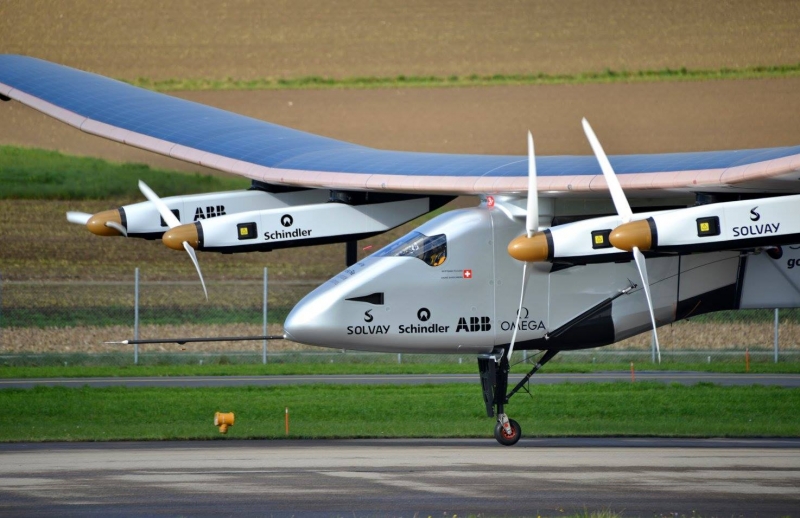A pilot and his team just landed a solar plane in Hawaii after a five day flight, in the eighth of a thirteen-part quest to fly around the world without a drop of fuel.
It took pilot Andre Borschberg almost 118 consecutive hours to get from Japan to Oahu in the Solar Impulse 2 - that's five days of sitting for those keeping track. He has to fly alone because of the very strict payload limits that can only support one pilot at a time. Bertrand Piccard alternates flight legs with Borschberg. Because of this lopsided situation, there is much other work to be done that, in this case, is handled by a flight team of 60 people located in Monaco.

The journey began in Abu Dhabi, United Arab Emirates in March and was originally scheduled to end before July. Delays have altered this plan and the team says that the journey will pause for a while and be completed in 2016.
It makes sense that the longer hours of daylight in spring and summer are necessary for a successful solar powered flight. The plane's wings and fuselage are covered in more than 17,000 solar cells that gather the sun's energy throughout the day so it can fly on through the night on battery power.
"This oceanic flight to Hawaii demonstrates that if technological solutions exist to fly a plane day and night without fuel, then there is potential for these same efficient technologies to be used in our daily lives, and to achieve energy savings to reduce CO2 emissions," Piccard said in a blog post.
If this journey proves successful, Borschberg and Piccard will be the first pilots to fly around the world in a solar-powered plane, and they (plus the whole team) will probably need a long nap.
https://www.techspot.com/news/61237-no-fuel-no-worries-solar-impulse-2-landed.html